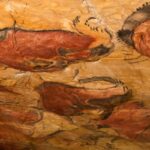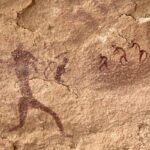We explain what the man of Cromañón was, what was his way of life and food. In addition, its general characteristics.
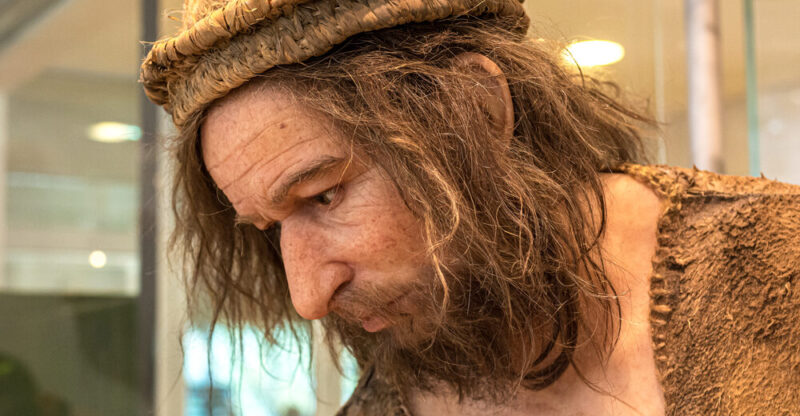
What was the man of Cromañón?
It is known as “Cromañón Man” or “Chromagnon Man” to a population of Homo sapiens that inhabited Europe during the upper Paleolithic period (40,000 to 10,000 years ago). Homo sapiens It is the scientific name of the human species and the use of the term refers to the evolution of the human being.
The term “Cromañón” is currently in disuse since it belongs to an academic tradition that postulated the evolution of human races from different hominid species. Today, to refer to these populations, we simply talk about Homo sapiens modern u Homo sapiens European.
The population of Homo sapiens formerly known as “Cromañón Man” inhabited different regions of Europe and developed different cultures during the upper Paleolithic.
In general terms, The rise of the manufacture of tools in ivory, asta and bone stands outthe specialization in the manufacture of sharp lithic objects (projectiles) and the invention of needles to sew. On the other hand, the creation of personal ornaments, statuettes, figurative paintings and the engraving of symbols suggest a leap in the quality of the symbolization process.
For approximately 10,000 years, he Homo sapiens modern coexisted with the Homo Neanderthalensisdifferent species within the family of hominids that were part of the human race. The Homo Neanderthalensis They were extinguished 30,000 years ago with the end of the last glaciation.

See also: Primitive Man
Use of the term “Cromañón”
For a long time it was assumed that the “Cromañón man” was the prehistoric representative of the white (or caucasoid). It was considered one of the three primitive types of humanitynext to Grimaldi man (black or black race) and Chancelade man (Yellow or Mongoloid race).
However, this theory has been abandoned by historians and paleontologists because there are no scientific evidence that allow to endorse the constitution of human races from different subspecies of Homo sapiens. Currently, the term “man of chromañón” is no longer used and speaks, however, of Homo sapiens European u Homo sapiens modern.
Origin of Homo sapiens
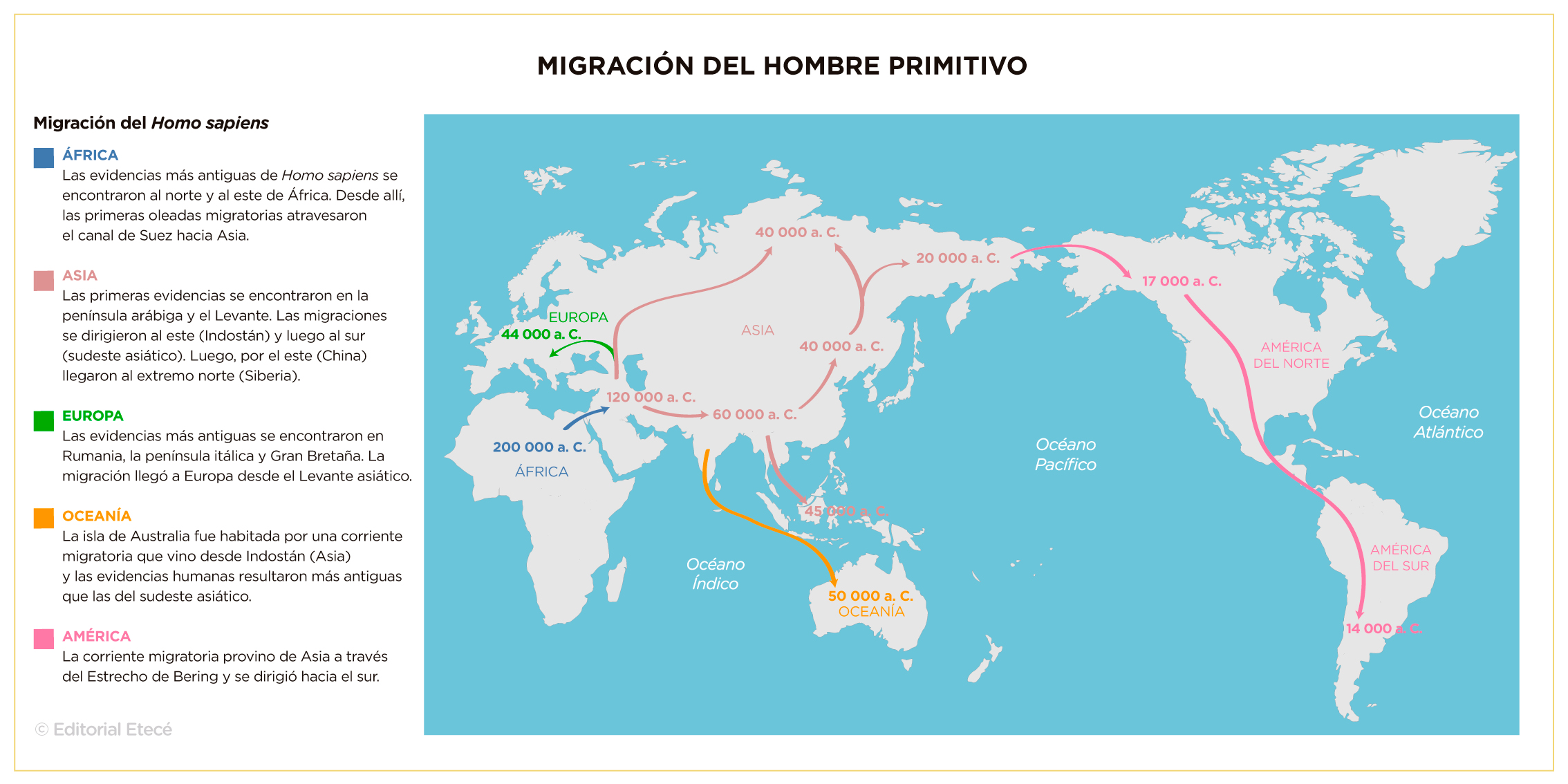
He Homo sapiens It is one species that evolved from Homo erectus. Its origin (as a clearly separated species) dates from 200,000 years ago. Is called Homo Sapiens Archaic to the species that lived this transition.
Most researchers argue that The species of Homo sapiens sapiens (The current human being) evolved in Africa And he moved to the rest of the continents, where he coexisted with other populations of Homo Sapiens Archaic.
Europe began to be populated by Homo Sapiens Modern for approximately 43,000 years. For a time, European populations were called Homo sapienswith the name of “Cromañón man”. However, it should be noted that differentiation with respect to other populations of Homo sapiens It is only cultural and does not correspond to biological distinctions.
Origin of the term “Cromañón”
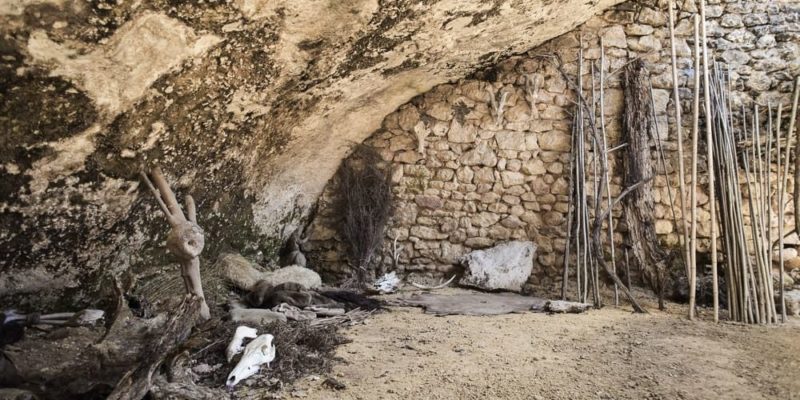
In 1869, the French paleontologist Louis Lartet found fossil remains of Homo sapiens Modern in the Cromagnon cavenear Les Elyzies of Tayac-Sireuil, Dordagne.
The set of fossil remains consisted of three male adult specimens, one female and a fetusand constituted the first finding of fossil remains of Homo sapiens in European territory. At that time, the finding was categorized as “Chromagnon man” (“Cromañón” is the castellanization of the term).
Way of life of Homo sapiens European
The populations of Homo sapiens Modern that Europe inhabited during the upper Paleolithic had a life characterized by:
- Nomadism. Human groups did not settle in a place permanently, but moved following seasonal cycles and animal migrations. They created mobile camps and used natural caves as refuge.
- Subsistence economy. The Homo sapiens They fed from elements that existed in nature through hunting and collection. During the upper Paleolithic, they developed more complex group hunting techniques, with weapons that allowed them to hunt large animals.
- Bands. The nomadic life and the subsistence economy led to human groups to organize in small groups (called “bands”) between 20 and 30 people. These groups were united by kinship relations and controlled the territories by which they moved to obtain their resources.
- Equal societies. Primitive men had no permanent leaders or bosses. Sometimes an individual could stand out for his skills and was specially respected. It is believed that the largest people in the group were heard from their experience and had greater authority to resolve conflicts. However, they were equal societies in which there were no established power hierarchies.
See also: nomadic and sedentary peoples
Feeding of Homo sapiens In the upper Paleolithic
The fossil and material remains of the Homo sapiens European reveal that They hunted oxen, mammoths and reindewhich allows us to assume that meat was an important part of its diet. In addition, this activity provided them with skins to make coats.
The collection compensated for the rest of his diet with plant products as fruits, leaves and seeds.
Culture of Homo sapiens In Europe
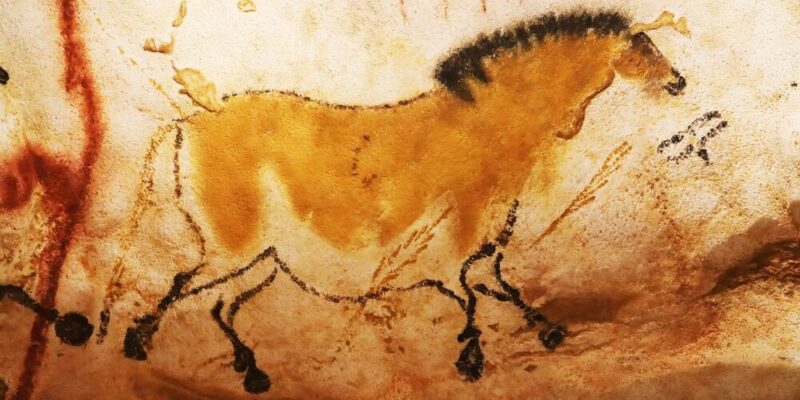
The main characteristics of the culture of the populations of Homo sapiens Europeans were the following:
- Logic and bone culture. The Homo sapiens Europeans of the Upper Paleolithic developed different work techniques in the stone (SevereTiense, Solutrense and Magdaleniense). Throughout the period, the lithic work style became more homogeneous between the different European areas and the stone sheets were progressively longer and small. The main tools that were made with stone were scrapers, buriles, low -back sheets and spear tips. Instead, bones of different animals were used to make canes, needles, spatulas and harpoons.
- Symbolic representation. The Homo sapiens The upper Paleolithic were characterized by the development of their symbolic thinking and different forms of representation. While other hominid species presented symbolic thought features (for example, Homo Neanderthalensis They also buried their dead), it is believed that the Homo sapiens He differentiated himself by the level of complexity with which he displayed his intellectual potential through symbolic thinking. In Europe, the Homo sapiens They expressed their ideas through representations of rock paint and the carving of anthropomorphic sculptures. Specialists consider that these representations may imply the existence of rituals and, therefore, complex beliefs about their existence and the functioning of the world. The main remains of rock art in Europe are located in the Cave of Altamira, the Cave of Chauvet and the Lascaux cave.
Cromañones and Neanderthals
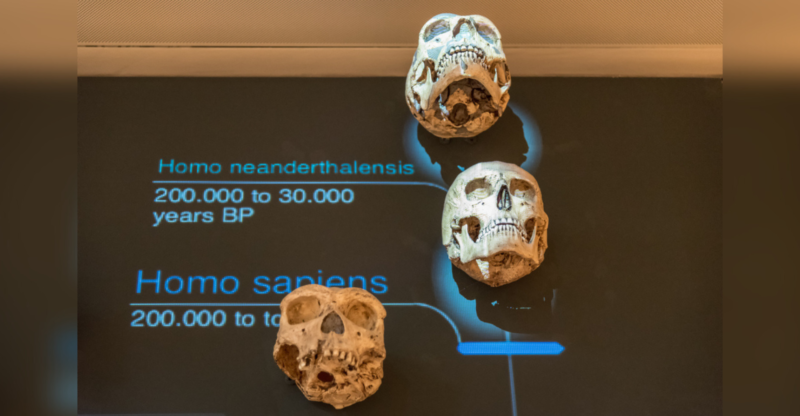
The Homo sapiens modern coexisted with the Homo Neanderthalensis In Europe for approximately 10,000 years. The specialists have postulated different hypotheses about the nature of the relations between the populations of both species.
Although the issue is still in debate, genetic studies on the hominization process indicate that There is evidence of hybridization between species. This means that the contacts between both species were biological, in addition to cultural.
On the other hand, most specialists consider that the extinction of Homo Neanderthalensis It resulted in the climatic changes of the end of the last glaciation and the cultural superiority possessed by the Homo sapiens modern to adapt to the new conditions.
Cultural history of Homo sapiens sapiens In Europe
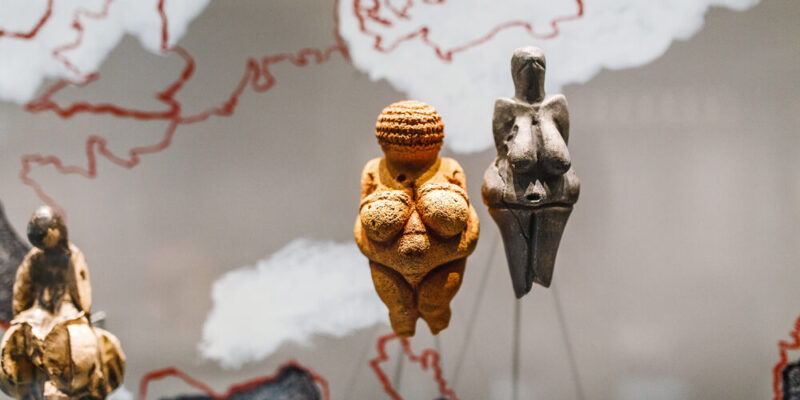
- Auriñaciense culture (40,000-30,000 years ago). The fossil remains belonging to the Homo sapiens Modern older found in Europe are in Romania, in the caves of Peştera Cu Oase, Peştera Muierii and Peştera Cioclovina. Among them, the oldest remains were dated by around 40,500 years. However, in the Russian site of Kostenki material vestiges have been found that could be identified as belonging to populations of Homo sapiensand dating from 3,000 or 4,000 years older. These are stone productions that, due to their production technique, belong to the lithic industry of the upper Paleolithic. However, there are debates about whether they belong to a population of Homo sapiens or a neanderthal population.
- Sergeotiense culture (30,000-20,000 years ago). About 30,000 years ago the coldest phase of the last glaciation began in the northern hemisphere. Most of the European lands became steppes and crossed important ecological changes due to the average temperature decrease. During that period the Homo Neanderthalensis The European territories arrived new waves of migrations from Homo sapiensfrom Asia, which brought a new type of culture, fully adapted to life in the steppes. This culture is known among specialists as Semi -Tiense culture. This period highlights the invention of perforated needles for sewing and propulsion -based weapons (spears or projectiles) and the realization of female statuettes, currently known as “paleolitic venus.”
- Solutrense culture (20,000-15,000 years ago). During this period the populations of Western Europe developed a lithic culture characterized by the evolution of size and retouching techniques. In addition, the rock art stands out in which zoomorphic paintings are represented in Roc de Sers and Fourneau-del-Diable, in France.
- Magdaleniense culture (15,000-8000 years ago). This is the final period of the upper Paleolithic, and was characterized by the end of glaciation and climatic changes that allowed the generation of new ecosystems. There was an increase in the amount of natural resources available for survival. This allowed, in turn, the appearance of the first semi -permanent settlements. This culture was characterized by the expansion of stone work techniques throughout the continent, the exploitation of marine resources (with the use of harpoons) and horse hunting (in Western Europe) and the mammoth (in Eastern Europe).
Keep with: Neolithic
References
- Martínez, I., & Sala, N. (2015). The adventure of Homo sapiens. Medical dendra Humanities Magazine, 14 (1), 65-79.
- Harris, M. (1981). Introduction to general anthropology. Alliance.
- “Cromañón man” on Wikipedia.
- “This was the face of the Cromañón man” in the avant -garde.
- “History of humanity 02 The man of Cromañón” (Video) in Historiariatv.
- “Cro-Magnon man” in history and biographies.
- “Cro-Magnon 1” in Smithsonian National Museum of Natural History.
- “Cro-Magnon” in The Encyclopaedia Britannica.

